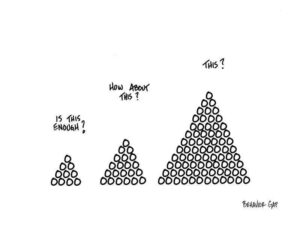Special to Financial Independence Hub
To purchase a home, having good credit is essential to be approved for mortgage financing.
If your credit needs some improvement, then there are steps you can take to fix it and make yourself more attractive to lenders when seeking approval for a real estate purchase.
What is the credit score, and why do you need it for real estate purchases?
Your credit score is a numerical value calculated using information from your credit report. It typically ranges from 300 to 850 and reflects how likely you are to repay debts based on factors like payment history, the total debt owed, length of credit history, and types of accounts used.
A good credit score can make it easier for you to get approved for a mortgage loan and secure favorable interest rates and terms. Conversely, a low credit score can result in higher borrowing costs and potentially even difficulty obtaining financing for a home. For this reason, it is vital to ensure that your credit score is in good shape before attempting to purchase real estate. It’s also a good idea to check your credit score regularly, as it can change based on any changes in your credit activity.
Enlist the Help of a Credit Repair Service
Enlisting the help of a credit repair service can be an effective way to improve your credit score for a real estate purchase. A reputable credit repair service can work with you to identify errors on your report, dispute information, and offer guidance on how best to handle any financial issues dragging down your score.
Look for a credit repair service that offers personalized services such as customized plans, detailed analysis of your credit report, and a team of certified professionals. It’s also important to check the credit repair service’s reputation: ensure they have good reviews from past clients and are licensed in your state.
Have a positive payment history
Your credit score is one of the key factors that lenders look at when evaluating your loan application, and a good payment history will help you get approved more quickly. Paying your bills on time every month is crucial because it shows that you are responsible for managing your finances. The longer and more consistently you can make your payments, the better. It’s also a good idea to keep track of late payments and rectify them as quickly as possible. If you have missed a payment or two in the past, work on building up your credit score by making timely payments in the future. This will show lenders that you are taking steps to repair your credit and are dedicated to staying on top of your finances.
Check for errors on your credit report
It is important to check for errors on your credit report before you start buying a home. Errors on your credit report can cause significant problems when trying to secure financing and result in delays or even denial of loan applications. While there are several ways to review your credit report, the most efficient method is to get a copy from each of the three major credit bureaus: Experian, Equifax, and TransUnion. By getting a copy from each bureau, you can compare results and make sure all information is accurate. Continue Reading…






